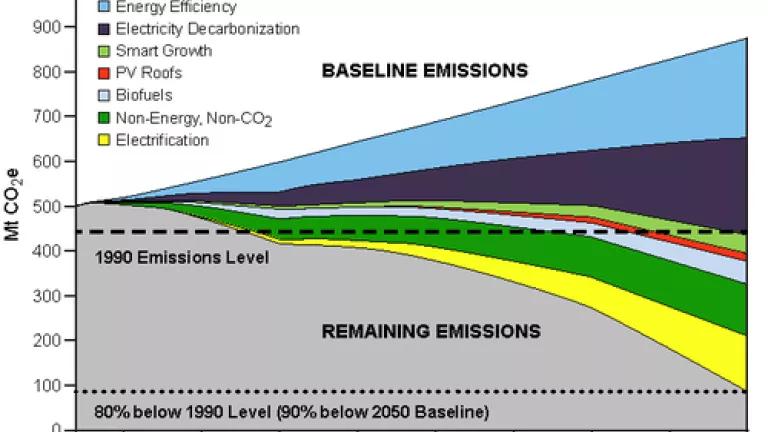
California Senate Bill 1275, authored by Kevin de León, just cleared the Senate's Environmental Quality committee with bipartisan support, and is one step closer to becoming law. This legislation would establish the Charge Ahead California Initiative, which aims to deploy at least one million electric cars, trucks, and buses in the state within the next ten years, and to ensure that all Californians benefit from the electrification of the transportation sector.
If California is to achieve air quality standards required by federal law, especially in the greater Los Angeles area and the San Joaquin Valley where air pollution is severe, our cars, trucks, and buses need to be zero emission vehicles. Accelerating this transition will yield tremendous public health benefits. According to the American Lung Association, a 100 percent electric fleet in California running on electricity that is one-third renewable would avoid $13 billion in health, climate, and other societal damages annually, 275 tons of criteria pollutants every day, and 10,000 asthma attacks every year.
This transition is also essential to meet California’s long-term climate goals. Multiple analyses conducted by scientists from Lawrence Berkeley National Laboratory, Energy and Environmental Economics, the Monterey Institute of International Studies, UC Berkeley’s Energy and Resources Group, the California Council on Science and Technology, the California Air Resources Board, and the Natural Resources Defense Council have come to the same conclusion â greenhouse gas emissions cannot be reduced to levels needed to prevent the worst impacts of climate change without widespread electrification of the transportation sector.[i] The figure below illustrates the critical role of such electrification (see the yellow “wedge”) in reaching our long-term goals:[ii]
Senate Bill 1275 (de León), which is sponsored by the Coalition for Clean Air, Communities for a Better Environment, Environment California, The Greenlining Institute, and the Natural Resources Defense Council, would place California on a path to achieving these air quality and climate goals by doing the following:
- Establishing a long-term plan for the state’s successful Clean Vehicle Rebate Project that has played a major role in attracting a third of the nation’s electric cars to California, with sufficient funding to achieve a mass market, incentives that are targeted at consumers whose purchase decisions will be most influenced by the program, and rebate levels that step down over time as technology costs are reduced.
- Building upon the state’s Hybrid and Zero-Emission Truck and Bus Voucher Incentive Project, which is largely responsible for bringing three-quarters of the nation’s electric trucks to California, and creating new programs to clean up the state’s trucks, buses, and heavy equipment, which is especially critical in communities that have historically been exposed to a disproportionate share of dangerous air pollution.
- Creating new policies to provide tangible benefits in such communities through programs that include: 1) electric car sharing and the deployment of charging infrastructure in multi-unit dwellings; 2) increasing consumer access to electric vehicle financing options that can help families immediately realize lower combined monthly auto payment and fuel costs; 3) combining incentives for the scrapping of old clunkers with incentives for new or used electric-drive vehicles; and 4) creating a “mobility option” with vouchers for transit and electric car sharing as an alternative to vouchers for replacement vehicles.
Today’s vote by the California Senate Committee on Environmental Quality brings this package of Charge Ahead California policies one step closer to becoming a reality.

[i] See California Council on Science and Technology, California’s Energy Future, May 2011; Williams et al., The Technology Path to Deep Greenhouse Gas Emissions Cuts by 2050: The Pivotal Role of Electricity, Science, January, 2012; internal NRDC analysis; Joshua Cunningham (Air Resources Board), Achieve an 80% GHG Reduction by 2050 in California’s Passenger Vehicle Fleet, SAE International Journal of Passenger Cars, December, 2010.
[ii] Williams et al., The Technology Path to Deep Greenhouse Gas Emissions Cuts by 2050: The Pivotal Role of Electricity, Science, January, 2012.
